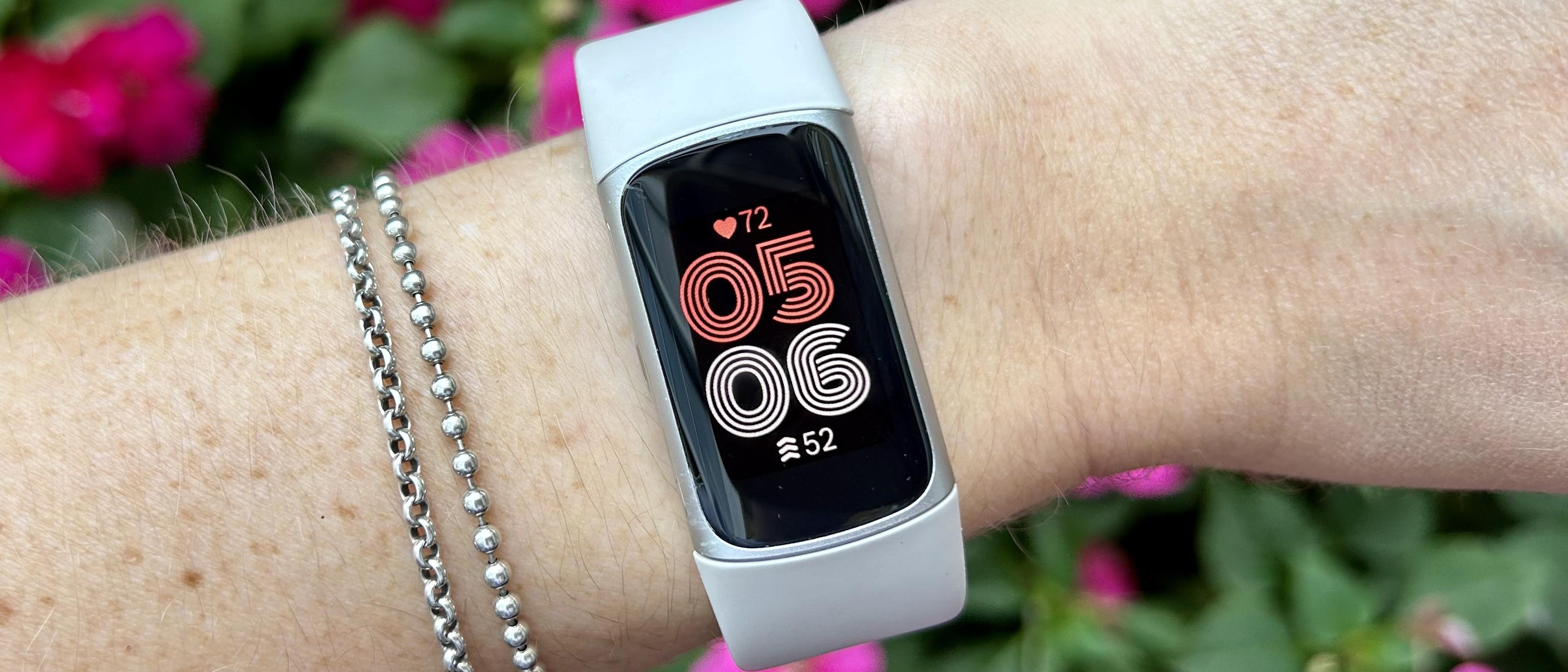Tom's Guide Verdict
The Fitbit Charge 6 brings a physical side button and new exercise modes to the company's popular midrange line. And, thanks to Google's acquisition of Fitbit, the Charge 6 has Google Maps, Google Wallet and YouTube Music built-in. It's a brilliant tracker, but it's still annoying many of its best features are locked behind the Fitbit Premium paywall.
Pros
- +
Comes with Google Maps and Wallet
- +
Includes a physical side button
- +
Improve heart rate monitor accuracy
- +
Stream HR to Peloton, NordicTrack, and Tonal machines
Cons
- -
Small screen may not appeal to some users
- -
Fiddly proprietary charger
Why you can trust Tom's Guide
Price: $159.95
Size: 11.4 x 22.9 x 10.2mm
Display: 1.04-inch AMOLED
Weight: 0.53 oz
Battery life: 6 days
Water resistance: Up to 50m
GPS: Yes
For a long time, the Fitbit Charge has been the brand’s most popular fitness tracker, with built-in GPS, and a number of advanced health tracking features in an affordable package.
The Charge 6 is no different — an update on the Fitbit Charge 5, this is the first fitness tracker to have all of the major Google apps built-in to the watch, including Google Maps, Google Wallet and YouTube Music.
But how does the Fitbit Charge 6 compare to some of the other best Fitbits on the market? And why should you invest in this over some of the other best fitness trackers out there?
To find out, two Tom’s Guide editors put the Charge 6 to the test over a couple of weeks to look at its performance during workouts, day-to-day wear, and when tracking sleep.
Fitbit Charge 6 review: price and availability
The Fitbit Charge 6 went on sale as of October 12, 2023, and costs $159.95, which is $20 less expensive than the previous-gen Fitbit Charge 5 when it went on sale in 2021.
Included is six months of Fitbit Premium membership, where you can view metrics like your Daily Readiness Score. After the six months is up, you can continue it for $9.99/month or $79.99/year — whether Fitbit Premium is worth it will depend on how you prefer to train and the level of analysis you find useful.
The Charge 6 comes in three different colors — black, champagne gold/coral, and silver/white. Fitbit has also released a new ocean-woven sports band for workouts and all-day wear, although the Charge 6 comes with the ‘Infinity’ band as standard.
Additional Sport and Infinity bands cost from $29 each; Hook & Loop and Woven bands are $34; and Horween leather and vegan leather bands cost $49.
Fitbit Charge 6 review: design
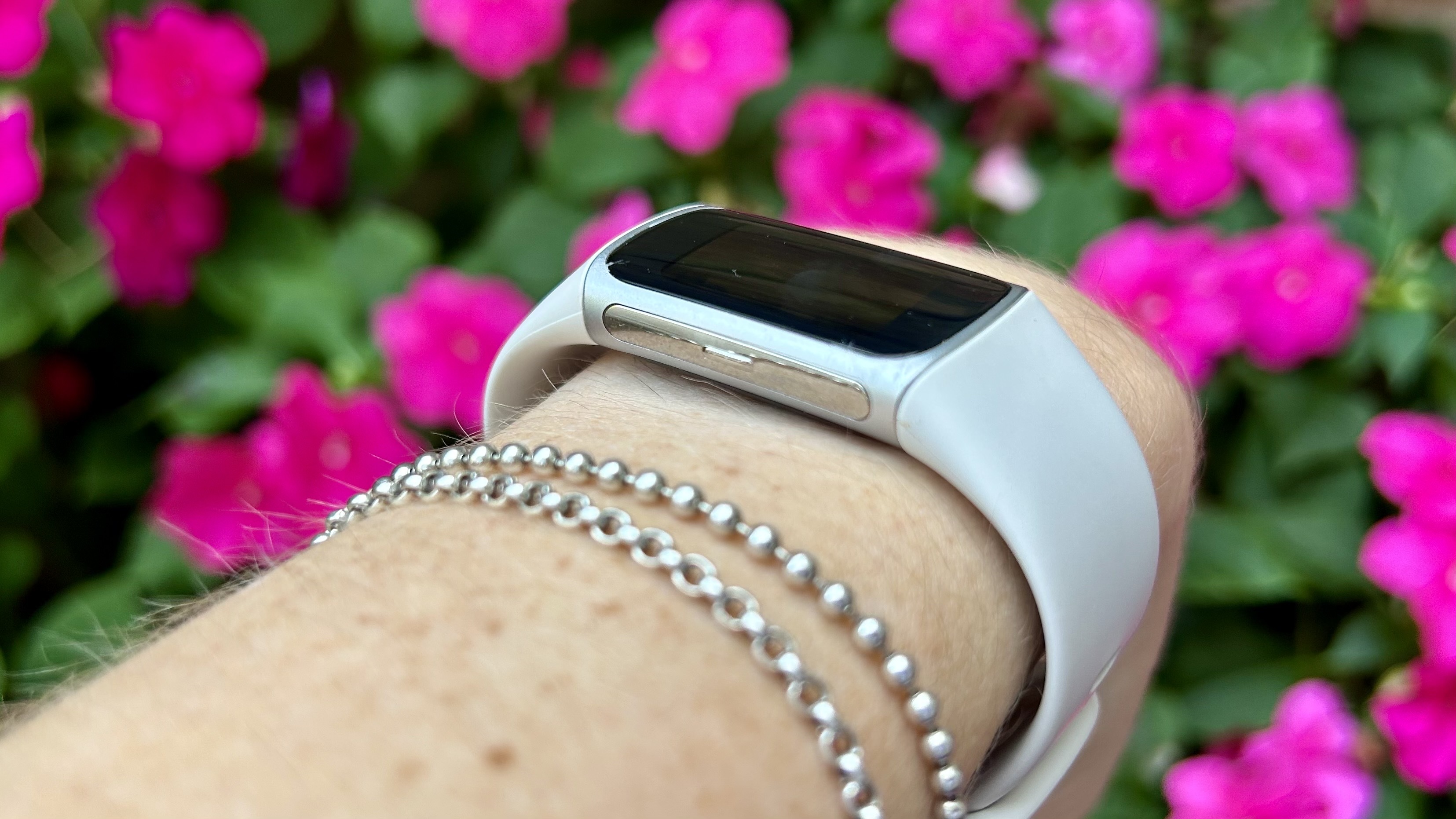
Outwardly, little has changed in the appearance of the Charge 6 versus the Charge 5. You get a nice, bright color display, and a device that has gentle curves and blends seamlessly into its strap.
While my personal preferences tend towards large devices like the Garmin Epix 2, I can appreciate the smaller, lighter, and more graceful Charge 6. Thankfully, Fitbit has reintroduced the haptic side button on the Charge 6; on the Charge 5, you had to navigate solely by tapping or swiping the display.
While the majority of your interactions with the Charge 6 will still involve swiping and tapping, you can now press the side button to get back to the main watch face; if you’ve started an activity, pressing the button lets you change the screen to show different metrics for that activity.
However, it comes with a proprietary magnetic charger that only loosely attaches to the Charge 6's underside, and I found it was a little too easy to pop off. Fortunately, you should only have to charge the Charge 6 once every few days. Plus, there's a second strap for those with larger wrists.
Fitbit Charge 6 review: fitness tracking
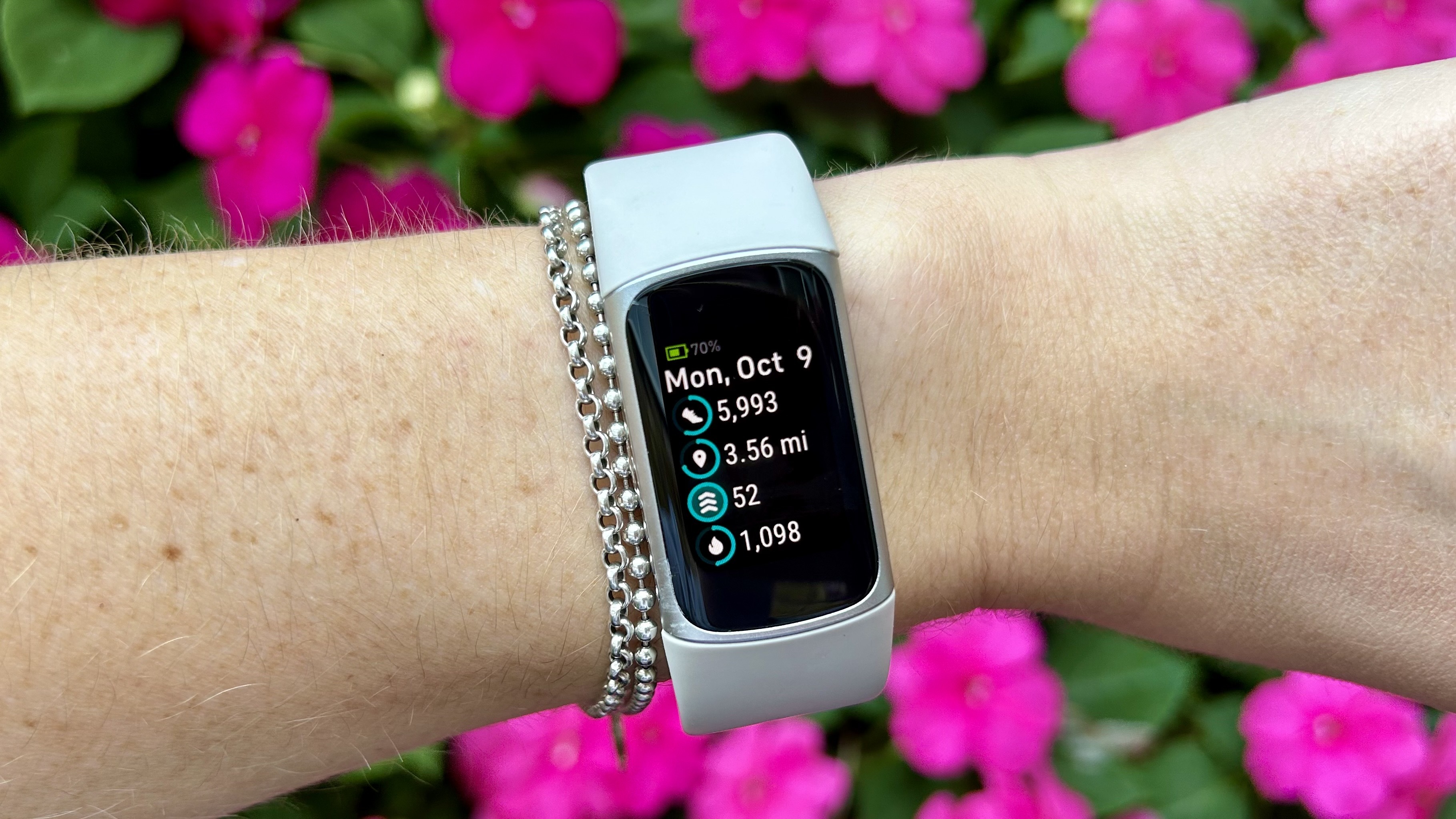
As someone who’s used to wearing much larger GPS watches, I found the Charge 6’s smaller display much more difficult to read while out on a run. The Charge 6’s display shows your pace as the largest figure, and above it, in very tiny numbers, is your distance.
That said, I’d argue that this isn’t the watch you buy if you’re training for a marathon — you’d want to invest in one of the best running watches instead. However, if you’re looking for a device to track your steps, calories, sleep, and the odd run, it ticks the right boxes. Just don’t rely on seeing too much on the run.
Like the Charge 5, the Charge 6 is also pretty difficult to navigate around when wearing gloves, or with sweaty or wet fingers. As well as running, where I found it pretty difficult to see the screen and swipe while maintaining pace, I used the watch for swimming sessions in my local pool.
Once the Fitbit is in swimming mode, like many other fitness trackers, it locks to prevent water from going into the tracker. To stop the activity, you have to manually tap twice on the screen, but I found this nearly impossible to do, and ended up thumping the tracker for a good few minutes before I was able to stop the swim.
That said, one big improvement compared to the Charge 5 is that you no longer have to choose between six, rather limited, sports profiles on the tracker itself. You can now see the full list of 40+ different sports modes from your wrist, so you don't have to customize a shorter list or fiddle with the Fitbit app.
The Charge 6 can also auto-detect six popular workouts: running, walking, biking, elliptical, rowing, and spinning.
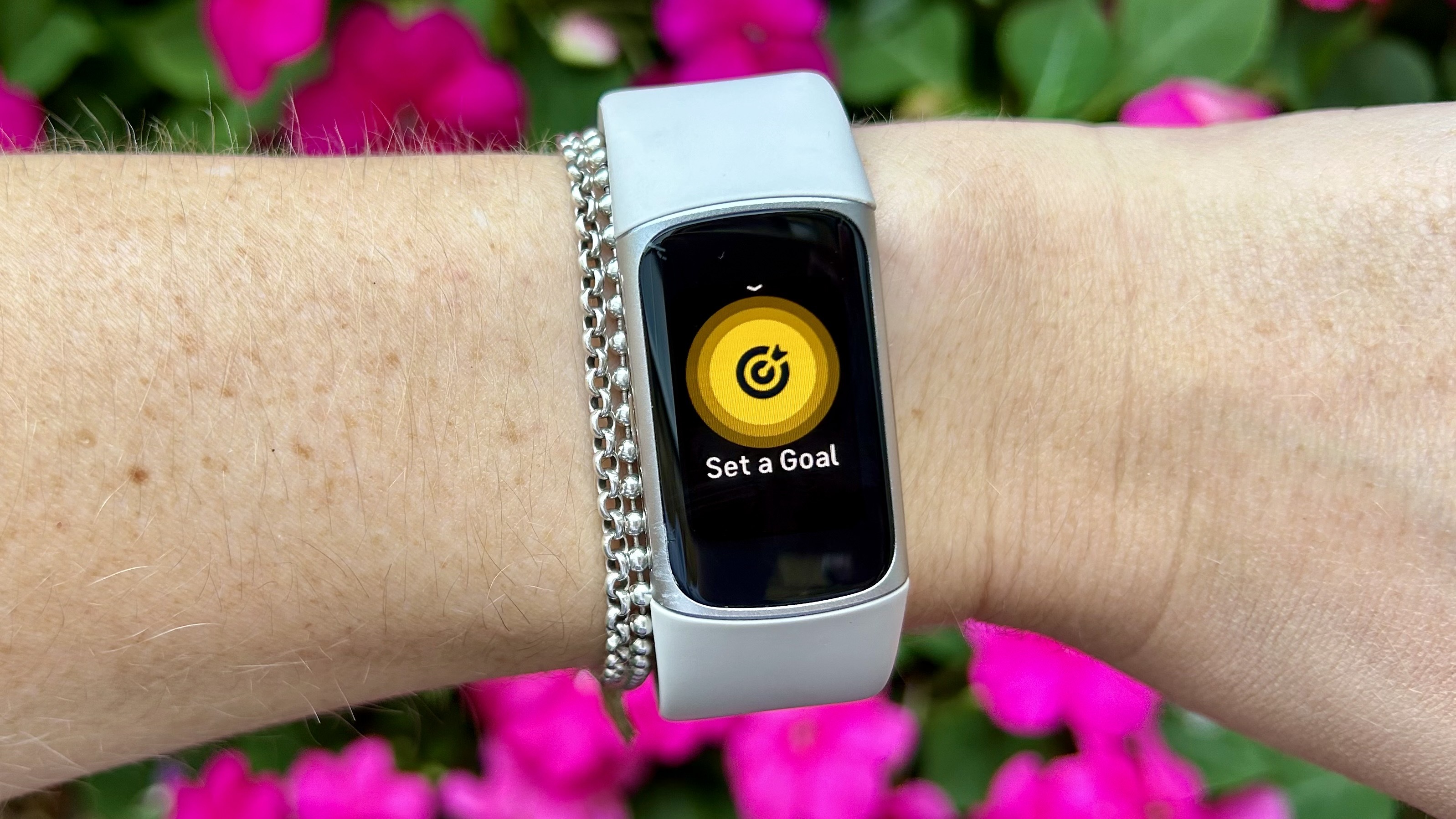
Plus, you can also now set up pace alerts for walks, runs, and bike rides from your wrist too, rather than having to reach for your smartphone — when you head into each activity mode, if you scroll down you can set a goal for the activity (activity zone, time, distance, or calories burned), and set laps.
The laps are automatically turned off, but when you turn them on, you can be alerted every mile, or kilometre, to get updates on your pace. Like the Charge 5, you’ll also see your Active Zone Minutes when completing a workout, and (if you don’t turn them off beforehand), the watch will buzz whenever you move into a new zone.
Overall, I found the Fitbit Charge 6 to be pretty accurate in most fitness tracking modes. At times, the GPS was slower to connect than it was on my Garmin, however I live in an area of bad signal, and often find newer trackers struggle to connect.
Sure, it’s not as advanced as the trackers I was using to test it with — my Garmin Forerunner 265 and Apple Watch Ultra 2, but it’s not pretending to be, and if you’re looking for a fitness tracker to get a better view of your overall fitness levels, you’ll get a lot from the Charge 6.
Fitbit Charge 6 review: sleep tracking
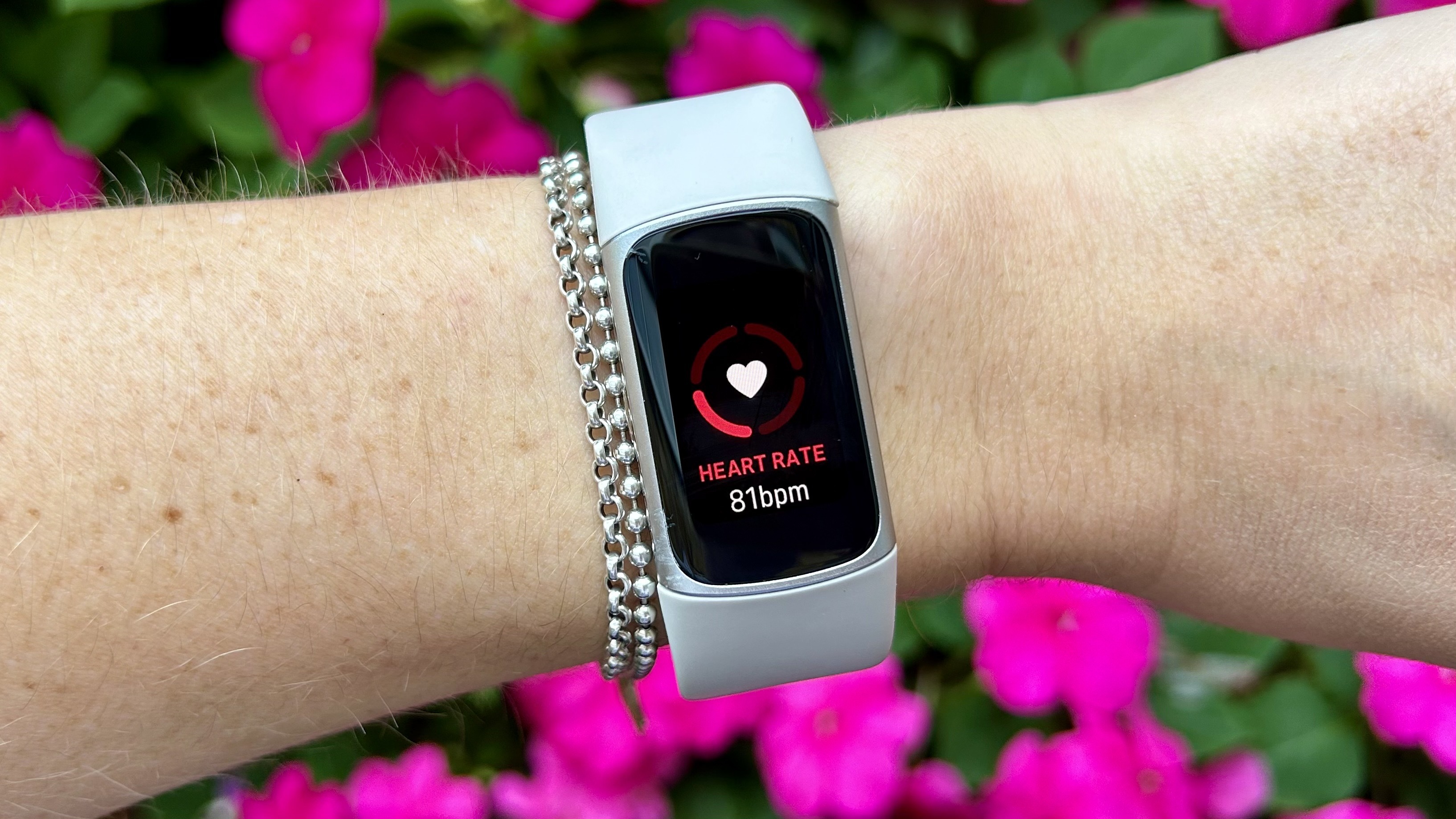
Another key metric when it comes to tracking your health is sleep. The Charge 6 has a SpO2 pulse oximeter sensor (also found in the Charge 5) to better help you understand your sleeping patterns.
Like previous models, the Charge 6 has all of Fitbit’s standard sleep tracking metrics, although, on the tracker itself, you’ll only be able to see your total sleep time and your sleep score from the previous night.
On the Fitbit app, you’ll be able to see your sleep score, sleep stages and set a smart wake alarm, however you have to be a Premium user to get extra sleep data, such as a breakdown of your deep, light, and REM sleep cycles.
To put the Fitbit Charge 6 to the test, I compared it to the sleep data collected by my Oura ring. I found that both devices had pretty similar results in terms of time spent asleep, and the corresponding sleep scores.
If I compare two night’s worth of sleep, the Oura ring says I was awake for 36 minutes, spent 1h 59 in REM, 3h 53 in Light, and 1h 40 in Deep. My Fitbit Charge 6 says I was awake for 38 minutes, spent 2h 27 in REM, 3h 22 in Light, and 1h 39 in Deep.
Of course, it’s impossible to know without being in a lab which tracker is actually closer to the truth, but as I’ve been wearing the Oura ring for years and have a lot of faith in it’s tracking, I was impressed to see the Charge 6 come up with pretty similar results, especially considering the tracker is a third of the price.
Fitbit Charge 6 review: features
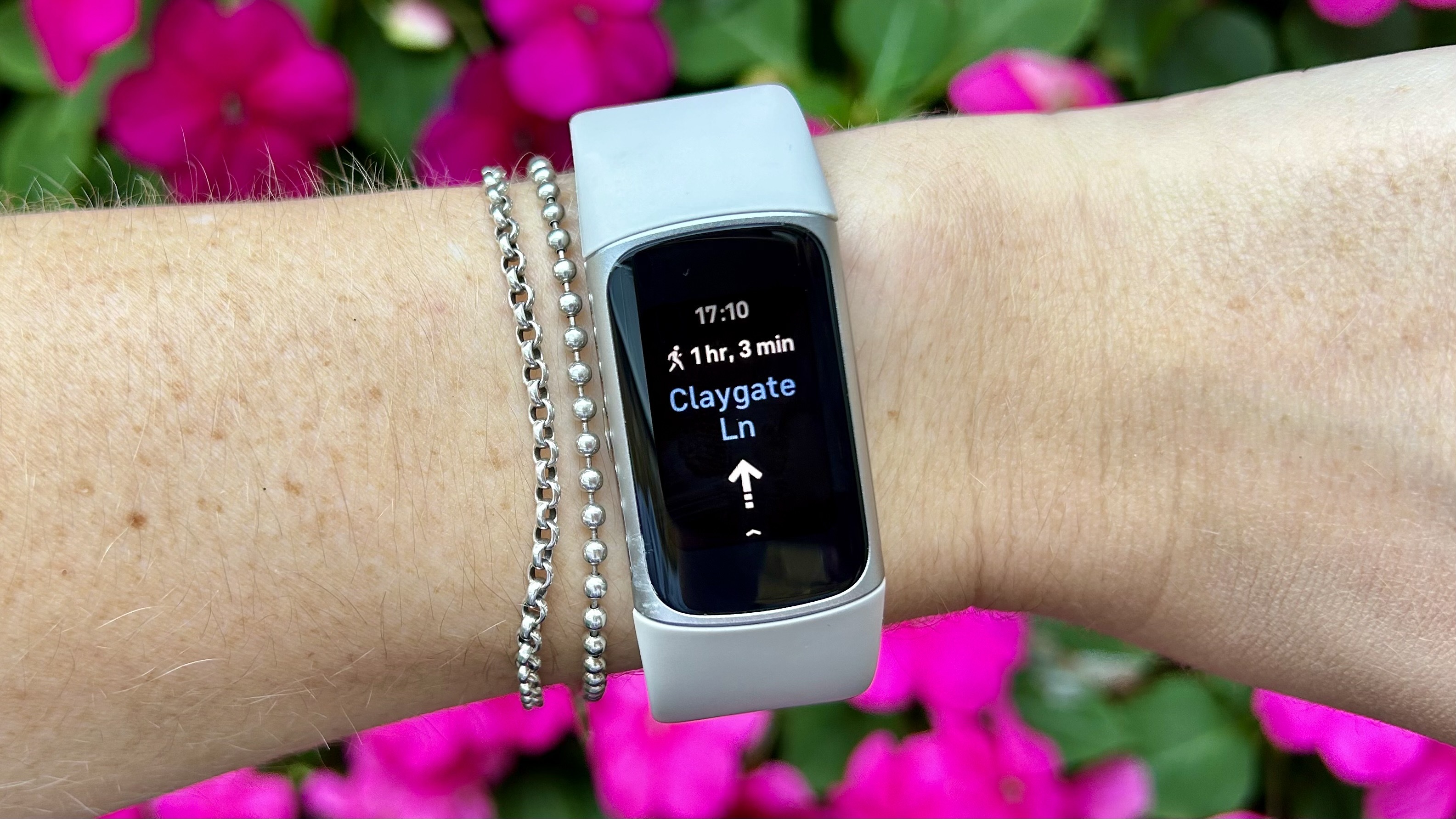
Like the Borg overrunning a Federation outpost, Google’s inexorable sublimation of Fitbit continues with the Charge 6. If you want to use Fitbit’s latest tracker, you’ll have to switch your Fitbit account to a Google account. Want to buy stuff using the Charge 6? Fitbit Pay has been replaced by Google Wallet.
You can also control music playback on the Charge 6. That’s nice, but it’s a real shame that it only works with Google-owned YouTube Music, and not third-party music apps like Spotify — a feature that had been available on some Fitbit devices prior to its acquisition by Google.
In another first for Fitbits, the Charge 6 also integrates with Google Maps. Once you’ve set this up on your phone (I had to update my Google Maps app on my iPhone), you can pair the two devices.
Once you’ve clicked start on Google Maps, you can follow directions from your wrist using the corresponding app on the Charge 6. It’s probably not a feature I’d use day to day, but would definitely come in handy on runs and hikes abroad, or longer dog walks.
It’s something that’s always been a bit of a bug-bear when it comes to testing the company's trackers, but as always, I need to point out that a lot of the most useful features on the watch are reserved for Fitbit’s Premium users.
If you want advanced sleep tracking, personalized workouts, access to Fitbit’s library of classes, and your Daily Readiness Score, you’ll need to sign up. Compared to the likes of Garmin and Apple, Fitbit is still one of the only brands on the market that puts their user’s content behind a paywall in this way.
Fitbit Charge 6 review: battery life
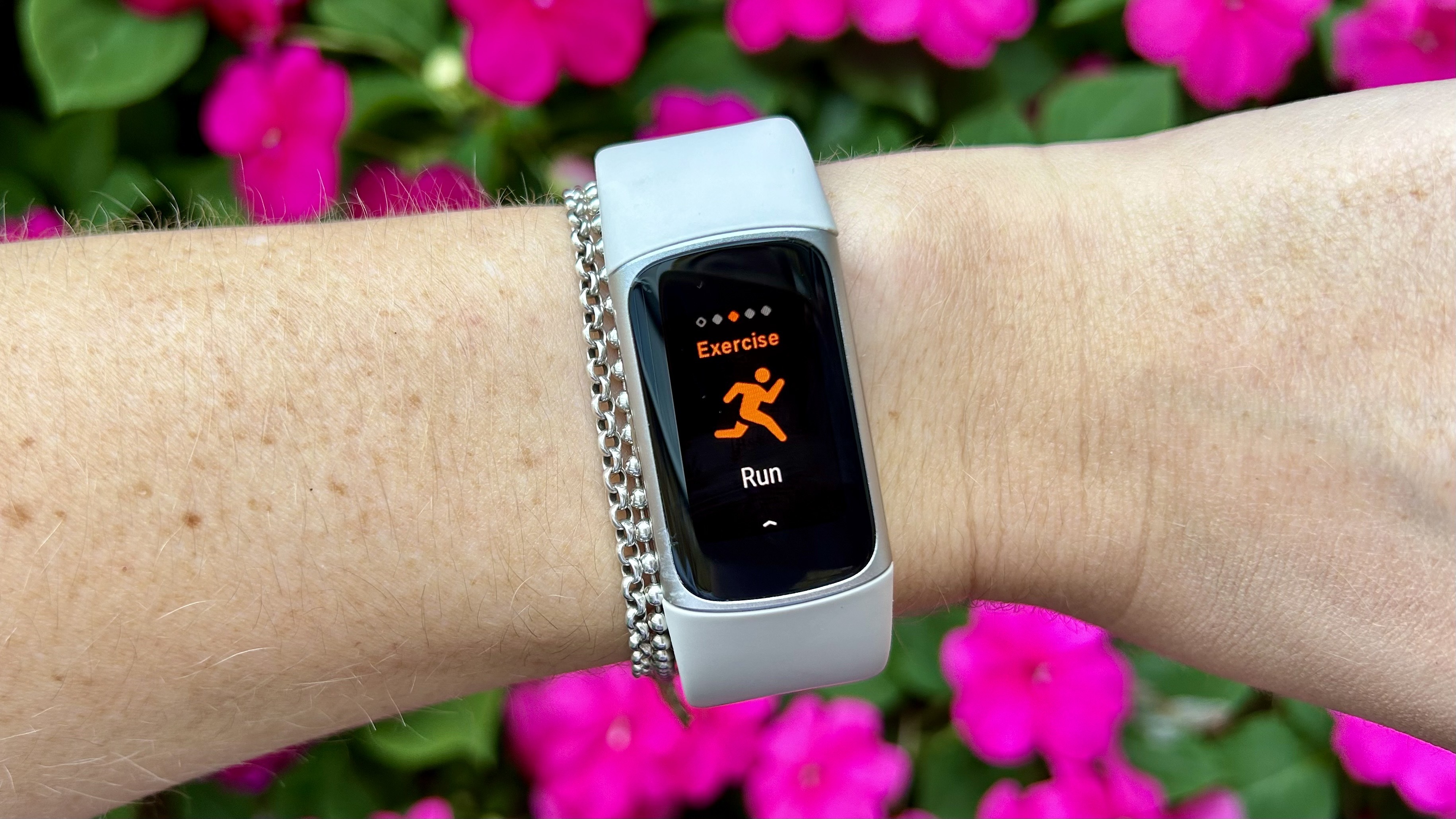
Fitbit says the Charge 6 should last up to seven days before you need to recharge the device. After one day (not using GPS), the watch had dropped by 15%. A 30-minute run using the band’s GPS dropped the battery life an additional 10%.
One clever feature is that you can set the Charge 6 to use your phone’s GPS when it’s in range, and automatically switch to its internal GPS if you leave your phone behind.
Of course, metrics like the always-on display will drain your Fitbit’s battery life much faster. During testing, we found that when this wasn’t turned on, Fitbit’s estimate was pretty-much accurate. It also took around two hours for the watch to go from dead to fully charged.
Should you buy the Fitbit Charge 6?
The Fitbit Charge 6 is easily one of the top trackers available right now. The upgrades made on the Fitbit Charge 5, namely the re-addition of a side button and the Google apps, have made an already great fitness tracker even better.
If you’re trying to decide between this and the slightly cheaper Fitbit Inspire 3, I’d spend a little more and invest in the Fitbit Charge 6, purely for the built-in GPS and the extra workout modes.
If you’re looking for more of a smartwatch, your best bet is to spend more and go for the Fitbit Sense 2, which is definitely a lot more advanced. Finally, if you’re a dedicated runner, this isn’t the tracker for you (and I’d argue no fitness tracker will be).
Spend $20 more and buy the Garmin Forerunner 55, which is far more user-friendly on the run and still allows you to track multiple sports zones and your sleep, see suggested workouts, and get accurate recovery data.

Jane McGuire is Tom's Guide's Fitness editor, which means she looks after everything fitness related - from running gear to yoga mats. An avid runner, Jane has tested and reviewed fitness products for the past five years, so knows what to look for when finding a good running watch or a pair of shorts with pockets big enough for your smartphone. When she's not pounding the pavements, you'll find Jane striding round the Surrey Hills, taking far too many photos of her puppy.
